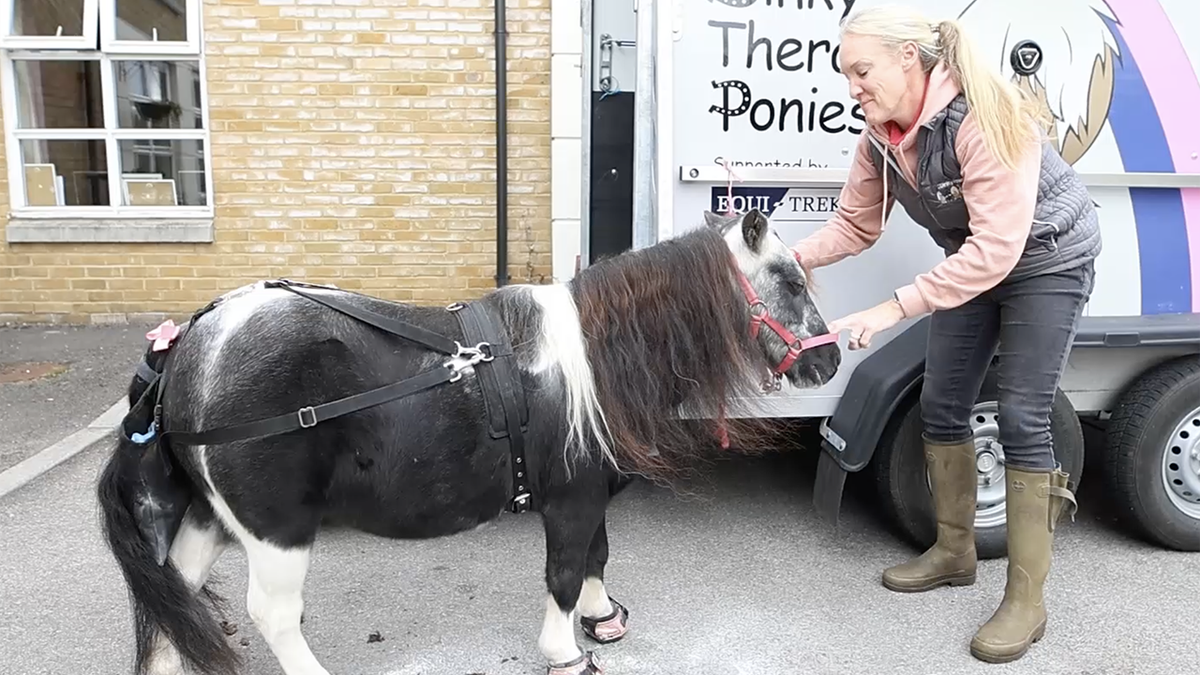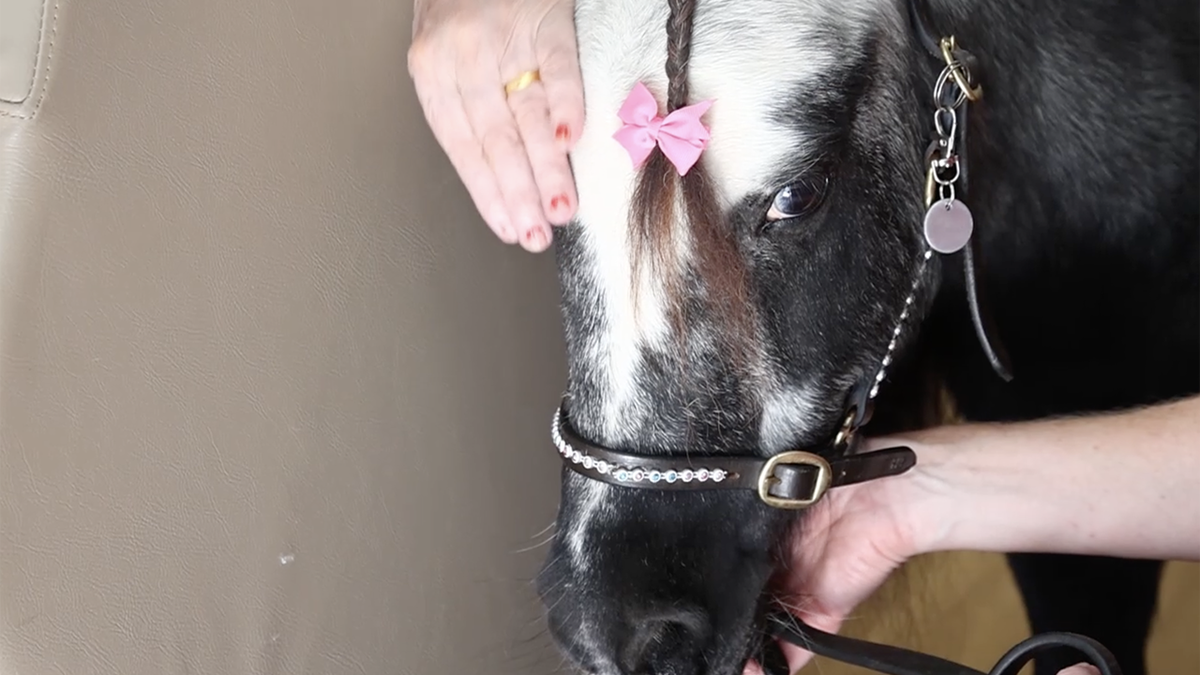Pint horses in the UK bring joy to those in care homes, in some places

The pint-sized ponies – as part of the medical team – visit hospitals, schools and care homes, and provide therapeutic sleep to those in need.
Owner Sarah Woodland, 42, got two small Shetland horses in the summer of 2022 from a friend, as SWNS, a British news service, reported. Poppy, 16, and Tinks, 17, are just 30 inches tall and enjoy arguing about it, the source said.
Woodland began holding private one-on-one counseling sessions before deciding to visit a foster home to encourage residents to connect with each other to improve mental health.
DEMENTIA ADVICE: 16 SAFE THINGS TO SAY TO YOUR LOVED ONE
The session went so well, Woodland decided to make them both therapy horses.
Providing comfort and companionship to those in need, she now takes animals to special schools, hospitals and care homes.
A pony spends time with a senior citizen. “Seeing and interacting with ponies is a way of communication for people who may have difficulty speaking. It’s almost like a form of love, and it gets people up and moving.” (SWNS)
Woodland runs Dinky Ponies from Oxfordshire.
“It’s touch and communication. Seeing and interacting with ponies is a way of communication for people who may have difficulty speaking,” he told SWNS.
“It’s almost like a way of love and it gets people up and moving.”
Before the show, she worked in London, and spent years raising her two children, aged 15 and 10, with her husband, Nick, 50, a retired army veteran.
When he arrived at the first nursing home with his vision, the response was “amazing.”
As her children grew, Woodland found herself with more time and desire to reconnect with her love of horses, SWNS noted.
HIT THE ROAD: NEW RESEARCH SUGGESTS WALKING CAN DETERMINE AGING, IMPROVE PHYSICAL AND MENTAL HEALTH.
He resorted to times of self-enrichment before getting the idea to visit a therapy pony.
Demand for his private riding lessons dwindled during the winter months, so he decided to try a different approach.

Through pony therapy, “it’s amazing to see the amazing impact animals have on people,” says Sarah Woodland (right), owner of Dinky Ponies. (SWNS)
Said Woodland, “You’ll find people saying that animals are their best friends too [these animals] I had a sense of knowing who needed to be comforted – that’s part of the reason I decided to put things on hold.”
When he arrived at the first care home with his vision in the summer of 2022, the response was “amazing,” he said.
“From day one, it just got worse,” he told SWNS.
People get together and beat horses.
“It’s completely removed, and it’s lovely to see the incredible impact animals have on people. I think it was partly the long-term effects of the closures where care homes had limited visitors – so the experience of having animals was very important.”
While Dinky Ponies still keeps the party going from time to time, Woodland said she’s focused more on therapy sessions.
During the tour, people get together and beat the horses.

“It’s the deep, often nonverbal connection between the horses and the people who visit them” that inspires Woodland’s passion to continue performing, she said. Woodland is pictured at left during the tour. (SWNS)
“It’s the deep, unspoken connection between horses and the people who visit them” that fuels her passion to continue doing it, Woodland said.
“Animals have a special way about them. There are many different things – empathy and communication,” he told SWNS. “I really believe they have a sixth sense and the ability to know who needs more attention.”
“Animals have a special way about them.”
During a recent visit, she said one care home resident was initially very skeptical of horses and had a table placed securely in front of her bed.
For more health articles, visit www.foxnews.com/health
Despite his reluctance, he agrees to meet Poppy – and slowly, his inhibitions come down.
“It was really fun to see it from start to finish. That’s the effect animals have on people,” he said.

Besides ponies Poppy and Tinks, Woodland also has Abby, 13, Georgie, 12, Gracie, five, Charm, 12, and Evie, 15. (SWNS)
Woodland has expanded and currently has seven horses – each with their own space.
Besides horses Poppy and Tinks, she also has Abby, 13, Georgie, 12, Gracie, five, Charm, 12, and Evie, 15.
He did admit, however, that Poppy is “a star.”
CLICK HERE TO SUBSCRIBE TO OUR HEALTH PAPER
Woodland said, “He has a natural way of relaxing people and sleeping on people’s laps!”
“I want to keep doing it for as long as possible as horses have such a positive effect on people.”
He will choose which pony to take to certain events depending on the needs of each area.
When visiting a new place, Woodland usually goes there with one pony to check out the setup.

Woodland will choose which pony to take to certain events depending on the needs of each area. (SWNS)
Horses usually work one day a week, which ensures that they are not overworked or over pampered.
Now, they are so used to visiting that they can even walk up and down elevators, enabling them to visit the children’s wards in hospitals, reports SWNS.
CLICK HERE FOR THE FOX NEWS PROGRAM
“I want to keep doing it as long as possible because horses have a positive effect on people,” Woodland said, according to the outlet.
Source link

